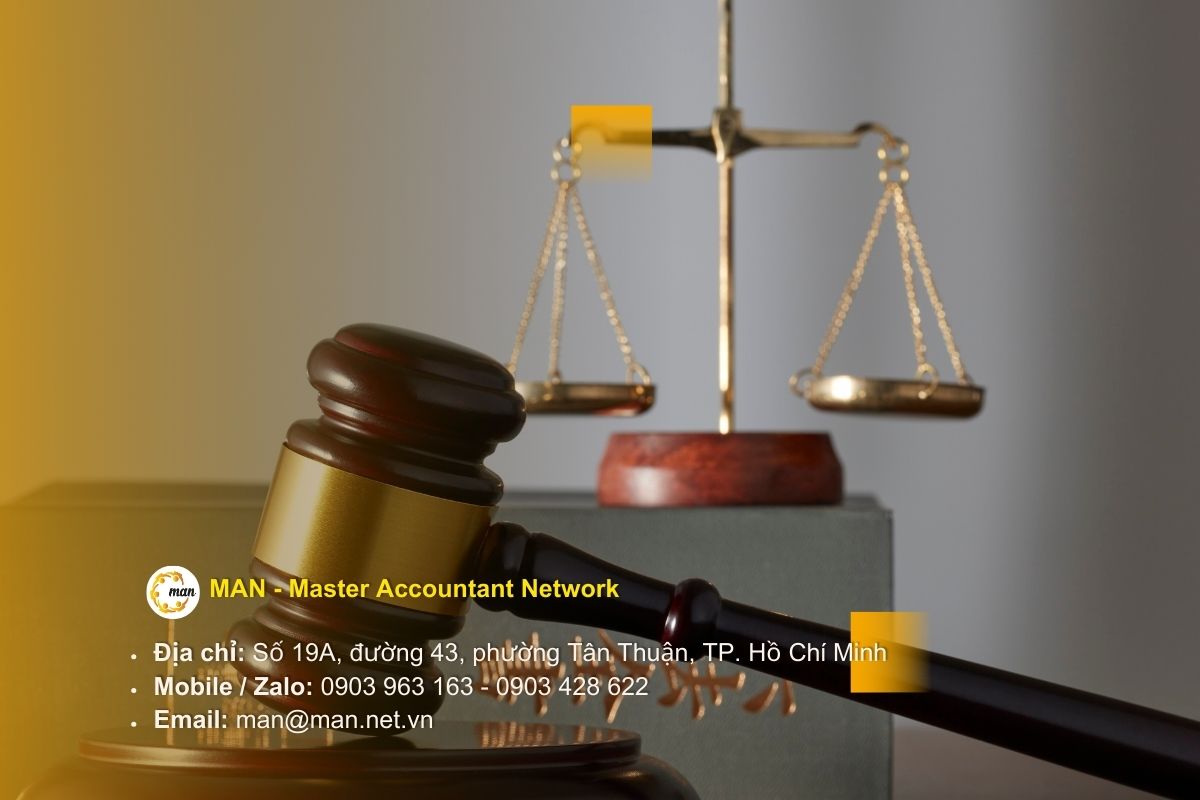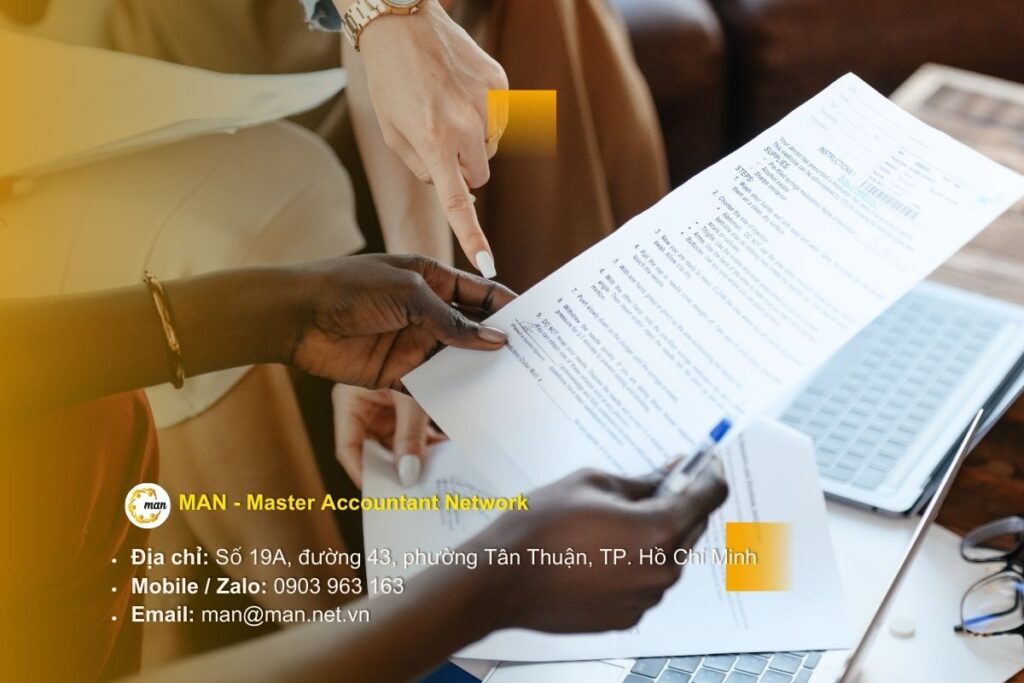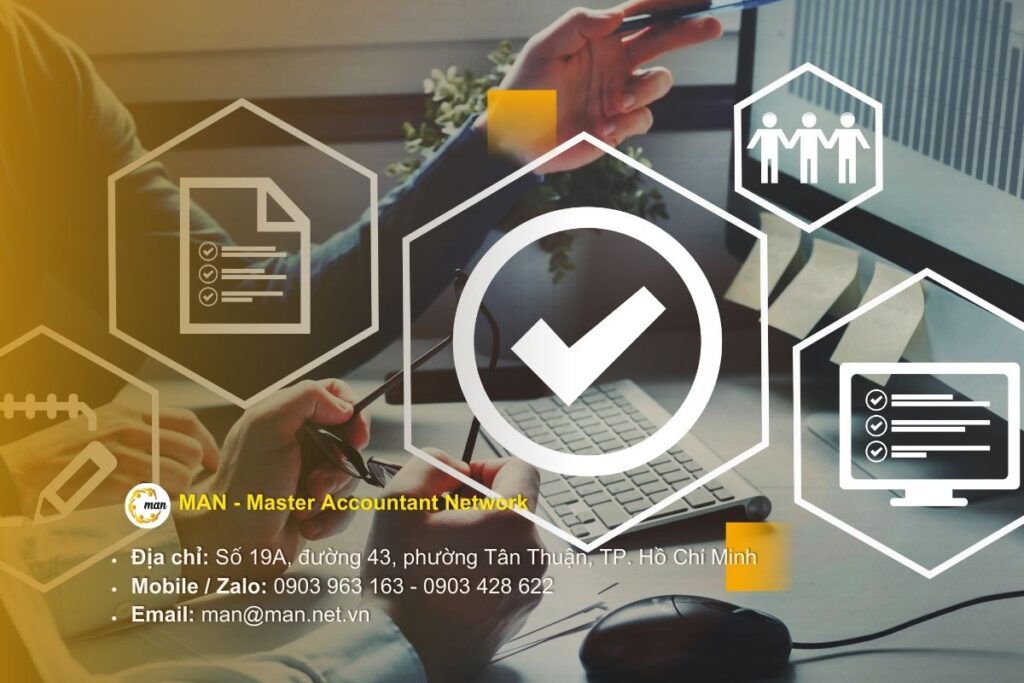Controlling related-party transaction risks is becoming an urgent requirement for all businesses. According to the General Department of Taxation, in 2024 alone, the tax authorities inspected 919 enterprises with related-party transactions (FDI), including 253 FDI enterprises. As a result, the total amount of arrears, refunds and penalties amounted to more than VND 1,780 billion, including VND 998.33 billion from the FDI enterprise group. These figures and practices show that if they do not proactively control related-party transaction risks, businesses can easily fall into a spiral of being eliminated from reasonable costs, directly affecting profits and financial reputation. At MAN - Master Accountant Network, we provide comprehensive compliance assessment and risk control services for related-party transactions, helping businesses prevent legal risks and optimize financial efficiency in a sustainable manner.
Overview of compliance and control of related party transaction risks
In the context of a constantly updated and increasingly stringent legal framework, compliance is only part of the overall picture. More importantly, businesses need to proactively build a mechanism to control related-party transaction risks, not only to meet tax declaration and settlement requirements but also to protect reputation, capital flow and long-term financial efficiency. So what is related-party transaction risk control and how is it understood in tax administration? Let's find out with MAN - Master Accountant Network right away.
What is related party transaction risk control?
Risk control affiliate transactions is the process by which a business identifies, evaluates and sets up preventive measures to limit the risk of being charged, fined or losing financial reputation due to errors in declaring and accounting for transactions with related parties. This is not only a legal requirement under Decree 132/2020/ND-CP and the updated Decree 20/2025/ND-CP, but also an important part of a transparent and sustainable financial management strategy.
In practice, controlling related party transaction risks includes activities such as:
- Build a dossier to determine the price of related transactions in accordance with the market price principle (Arm's Length Principle).
- Ensure that interest expenses, internal service fees and group allocations are properly and appropriately documented.
- Periodically review financial reports and related party transaction declarations to promptly detect and correct errors.
- Conduct benchmarking to avoid the risk of having expenses rejected by tax authorities.
In the 2020-2023 period alone, thousands of businesses were inspected and examined in depth regarding related-party transactions, with the total amount of tax arrears and fines reaching tens of thousands of billions of VND. This shows that if businesses do not proactively control the risks of related-party transactions, they may face serious consequences both financially and in terms of reputation.
The objective of controlling related party transaction risks
In controlling risks in related-party transactions, businesses not only need to identify challenges but more importantly, they need to clearly define key objectives. These objectives ensure compliance with the law and help businesses build a transparent and sustainable tax and financial management foundation. Specifically, there are four main objectives that every business needs to focus on:
- Ensuring compliance with tax laws: Especially according to Decree 132/2020/ND-CP and updates 2025, enterprises must correctly identify related entities, declare and prepare transparent related transaction records.
- Prevent financial and legal risks: avoid cost exclusions (such as interest expenses exceeding the 30% EBITDA threshold), avoid tax assessment, collection or administrative penalties.
- Optimize legal financial and tax strategies: Establish pricing mechanisms, loan structures and profit allocation in accordance with the arm's length principle.
- Enhance the reputation and transparency of financial reports: support the development of internal control systems, strengthen trust with tax authorities, investors and business partners.
Controlling transaction risks is not only about regulatory compliance, but also a strategic management tool that helps businesses maintain transparency, financial stability and minimize legal risks.
Current legal framework and 2025 update

Decree 132/2020/ND-CP prescribes principles, methods and procedures for determining trading prices; scope, subjects, declaration obligations and records.
To understand the impact of the latest changes in related party transaction management, especially the important amendments at Decree 20/2025/ND-CP Effective from March 27, 2025 and applicable to the 2024 corporate income tax period, businesses should refer to the comparison of these two legal documents. The document analyzes in detail new points such as determining "related parties", the content of the declaration dossier, adjusting Appendix I, the limit on interest expenses and the responsibility of the State Bank in providing information on related-party transactions.
Learn more at: Comparison of Decree 20/2025 and Decree 132/2020
Common risks of related party transactions and how to control them
During their operations, businesses often face many types of risks arising from related-party transactions. If not strictly controlled, these risks can lead to tax arrears, late payment penalties, and even affect financial reputation and relationships with partners. To help businesses visualize more clearly, below is a summary table of common related-party transaction risks and effective control methods.

Board: Summary of common related party transaction risks and effective control methods.
| GDLK risk type | Consequence | How to control |
| Missing or incorrect declaration of the associated object. | Omission or incorrect declaration of transaction subjects leads to the risk of tax arrears. | Reviewing the association relationship according to Decree 132/2020/ND-CP and updating the revised criteria in Decree 20/2025/ND-CP. |
| Pricing is not based on independence principles. | Adjusted profit margin. | Apply the independent comparison method. |
| Incomplete file (Local File, Master File, CbCR). | Increase the probability of being inspected and punished if the presentation is not sufficient. | Prepare related party transaction documents on time, update changes according to tax period. |
| Exceeded interest expense ceiling 30% EBITDA. | Eliminate expenses when settling, increasing taxable income. | Calculate EBITDA (Learn more about: How to calculate EBITDA), create transparent loan applications and demonstrate appropriate interest rates. |
Tax policies are constantly changing and transparency requirements are increasing, controlling related party transaction risks cannot be done once and then left unchecked. In reality, many businesses are at risk not because of lack of effort, but because they have not conducted regular compliance assessments to promptly identify and handle arising problems. Therefore, the question is: Why is it necessary to periodically assess compliance and control related party transaction risks?
Why is it necessary to periodically assess compliance and control risks of related-party transactions?

Controlling related party transaction risks is not a “one-time” task but needs to be done periodically to protect businesses from constant changes in tax policies and inspection trends. Specifically:
Identify problems early, minimize legal risks
When businesses proactively review and assess trading risks, errors in declaration, transaction valuation or accounting for interest expenses will be detected early. This helps businesses avoid the risk of being charged by tax authorities, fined or having additional measures applied that can cause great damage.
Ensuring transparency and enhancing financial credibility
Enterprises with effective mechanisms to control related-party transaction risks will be able to build transparent and reliable financial reports in the eyes of shareholders, investors and partners. This is an important advantage in the context of multinational corporations increasingly paying attention to compliance and sustainability in governance. Optimize legal tax-financial structure.
Performing periodic transfer pricing risk controls not only helps businesses avoid cost exclusions or tax adjustments, but also supports the design of capital structures, interest rates, service prices and allocation fees in a legal and optimal manner. Thanks to that, businesses both comply with regulations and ensure long-term business efficiency.
In the first 6 months of 2025, 119 affiliated enterprises were inspected, resulting in about 600 billion VND in tax collection and penalties, while reducing losses by 3,579 billion VND and increasing taxable income by 5,091 billion VND.
Find out now: Improve tax management efficiency for enterprises with related transactions.
These figures demonstrate that the risk of GDLK is not just theoretical, but has led to real significant financial losses for businesses.
Controlling related party transaction risks is more urgent than ever, not only to help businesses comply with the law, but also to protect business interests, prevent tax arrears, and maintain financial reputation.
To avoid the situation of “closing the barn door after the horse has fled”, businesses need a systematic process of assessing compliance and controlling risks in related-party transactions. With practical experience accumulated from many successful consulting projects, MAN – Master Accountant Network has built a specialized service to help businesses proactively prevent risks and optimize tax strategies. The service process at MAN – Master Accountant Network includes clear and transparent steps.
Compliance assessment and risk control services for GDLK at MAN – Master Accountant Network
In Vietnam, practice shows that related-party transactions are increasingly popular with the strong increase in foreign direct investment (FDI) and the development of domestic economic groups. Therefore, tax authorities have continuously strengthened inspections and checks to prevent transfer pricing risks and budget losses. The statistics in the first 6 months of 2025 (mentioned above) on the number of inspected enterprises and the amount of arrears, refunds, and penalties show the seriousness of the problem, and at the same time pose an urgent requirement for enterprises to proactively control related-party transaction risks in accordance with the current legal framework.
The compliance and risk assessment service of related party transactions at MAN – Master Accountant Network helps businesses proactively control related party transaction risks in accordance with the current legal framework (Decree 132/2020/ND-CP and updated Decree 20/2025) and international practices. Below is a detailed description of the 4 main steps in the service process of MAN – Master Accountant Network.
Table: MAN service process – Master Accountant Network.
| Steps to take | Content | Target |
| Survey and analysis of related transaction records. | Review contracts, documents, transaction data, and compare data. | Identify and identify errors in the records. |
| Risk assessment. | Compare market prices, analyze financial indicators. From there, choose to apply the appropriate method. | Quantify tax risks, penalties, and financial impacts. |
| Proposed solutions | Optimize capital structure, standardize documents, build transfer pricing policy. | Minimize risks, ensure compliance with relevant Decrees. |
| Support during tax inspection | Prepare protection documents, represent to work with tax authorities. | Protect legitimate interests, minimize collection and fines. |
With a clear 4-step process, MAN – Master Accountant not only helps businesses control related-party transaction risks but also accompanies them in standardizing documents, improving transparency and ensuring compliance with tax laws. This is the foundation for businesses to maintain stability.
Conclude
Controlling the risk of related-party transactions is no longer an option, but a mandatory requirement for businesses to maintain transparency, optimize costs and protect their reputation before the management agency. With more than 30 years of experience, the team of CPA, ACCA, MAN - Master Accountant Network confidently brings businesses comprehensive auditing and consulting services on related-party transactions, both complying with legal standards and ensuring long-term legitimate interests.
Businesses are looking for a reliable companion to assess compliance and control transaction risks, Please contact us immediately. MAN – Master Accountant Network for expert advice and optimal solutions.
MAN – Master contact informationr Accountant Network
- Address: No. 19A, Street 43, Tan Thuan Ward, Ho Chi Minh City
- Mobile / Zalo: 0903 963 163 – 0903 428 622
- E-mail: man@man.net.vn
Editorial Board: MAN – Master Accountant Network




